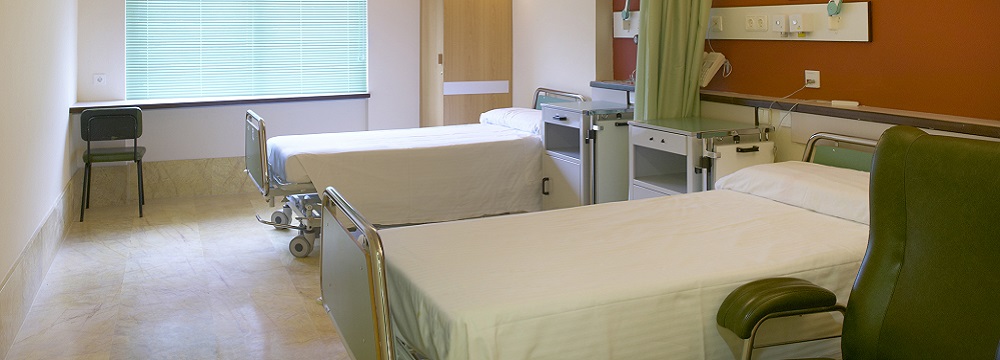
The reality of postacute care
Skilled nursing facilities and home health care can help patients continue recovering after discharge, but hospitalists, patients, and caregivers must understand their limitations.
Christine D. Jones, MD, MS, identified the need for her SHM Converge 2022 session, “What Hospitalists Should Know About Transitions to Post-Acute Care,” while surveying home health staff for research.
In the words of one home health nurse, “Some patients and their families are totally clueless what home health provides, and it seems like hospital workers and doctors are also clueless what we provide,” according to a study Dr. Jones and colleagues published in the Journal of Post Acute and Long-Term Care Medicine in 2019.
During her talk, Dr. Jones, an associate professor of medicine at the University of Colorado in Aurora, offered more than clues about what skilled nursing facilities (SNFs) and home health care can and can't do for patients after they're discharged by hospitalists.
SNF stats
According to 2013 data, about 9% of all discharged patients in the U.S. went to a SNF, she reported. “They have a skilled nursing need, like daily wound care, IV antibiotics, tube feeding, and/or they'll benefit from therapy, so physical, occupational, and/or speech therapy five or six days a week.”
Under Medicare regulations, a registered nurse (RN) must be present at a SNF eight hours a day. The rest of that time, the facilities are covered mostly by licensed practical nurses, with a general guideline from Medicare of “sufficient nursing staff to meet residents' needs,” Dr. Jones explained. “This can be broadly defined—a nurse can have anywhere between 20 and 50 patients.”
Hospitalists should keep in mind these “really challenging circumstances” when they envision the nursing care their patients will get postdischarge. “Unless it's Tylenol or bowel care, [as-needed medications] may not be given,” she said. The small number of nurses also makes fall prevention tough. “If they're falling in the hospital, with 1:5 or 6 staffing ratios,” patients are even more at risk of a fall in the SNF, Dr. Jones said.
Expect limited availability of physicians and advanced practice providers (APPs) as well. “There's no night or weekend MD presence in general,” said Dr. Jones. “The Medicare guideline is that the first MD or APP visit has to be within the first 30 days of admission, and then at 30-day intervals up until 90 days.”
A study found that about half of patients were seen by a physician or APP in their first day at a SNF, and 80% within four days. “But about 10% of patients had no visit during their SNF stay,” she said, citing results published in Health Affairs in 2019.
“This is really important to consider when you're discharging patients to a SNF,” said Dr. Jones. “Your [discharged at] 5 p.m. patient who's going for IV antibiotics who has a discharge summary that's 10 pages long might not be seen by an MD until Monday.”
That knowledge has changed the practices of her hospital medicine team—they try to avoid having complex patients discharged to a SNF on Friday evenings, for example.
Pharmacy services also may have delays at SNFs. “A lot of times it can take 24 to 48 hours to get medication delivered, so … [for a] late-evening admission requiring pain meds, they might not get them until the next day or so,” said Dr. Jones.
The typical turnaround time for a lab test or an EKG at a SNF is 24 to 48 hours, and even a stat order can take up to 24 hours. “If someone needs daily labs, like tacrolimus or something like that, it could be very challenging,” she said. An X-ray can also take 24 to 48 hours.
Wound care is a good reason for a patient to be a SNF, but hospitalists should know that the supplies available to SNF nurses are often different from those used in the hospital setting. “It's really helpful for them to have specific wound instructions so they can swap out different supplies as needed,” Dr. Jones said.
Another aspect of care that may be more complicated than expected is the follow-up appointment. “We're very focused in care transitions on getting people follow-up in a timely manner. However, if they get follow-up appointments while they're at a SNF, they might be charged for transportation, $100 to $200 each way,” she said. Current staffing shortages also mean that patients may travel alone to these visits.
Potential solutions include scheduling follow-ups with subspecialists by video or ensuring that family members can accompany patients to in-person visits, Dr. Jones said.
Patients and their family members also need to know the potential costs of SNF care. When patients are approved by Medicare for SNF care after discharge, that covers 20 days. After day 20 of skilled nursing facility care, “traditional Medicare plans require patients to pay about $170 a day,” if they still have a skilled need, said Dr. Jones.
Medicare Advantage plans offer variable SNF coverage, she added. “They might say, ‘Hey, you get 10 days'” instead of the 20 days.
Only Medicaid or long-term care insurance will cover room and board in a SNF over the longer term, and that runs $250 a day on average. “So you need to be able to afford a monthly payment that's equivalent to a million-dollar house mortgage to be able to stay there as a long-term resident,” said Dr. Jones. “This is why our care managers really think about, do they have a destination [after the SNF]? Because if they don't, it's problematic.”
Home health
Home is a naturally appealing destination after hospitalization. Slightly more than 11% of all hospitalized patients are discharged with home health services, according to the 2013 data, Dr. Jones reported.
Medicare offers another somewhat vague definition in its eligibility requirements for home health care: Leaving home must be medically contraindicated and/or require a considerable and taxing effort for the patient.
Patients on home health require skilled care on an intermittent basis. “So nursing, [physical therapy], less commonly [occupational therapy], speech therapy, social work, and, way less commonly, home health aides,” she explained.
Home health is not suitable for patients who require immediate or daily attention, Dr. Jones noted. “Because how frequent are home health services? Well, it usually takes them about 24 to 48 hours to get out for that first visit after hospitalization,” she said. “Before I had learned more about home health, I would say [to patients], ‘They're going be right out there as soon as you get home.’ That's probably not the case.”
Most home health nursing care is provided by an RN, who will visit the patient one to three times a week, for up to an hour or two at a time.
While there are limits, much can be accomplished when that care is targeted at the right patients, she noted. “They have such a unique ability to lay eyes on patients in their home environments,” Dr. Jones said. “Maybe you didn't know that they have newspapers piled all the way around and need a [home] safety evaluation. Maybe you didn't know that they're really having trouble with food. … And then there's this ability to interact with the care partners in the home, to go through the medication bottles and really teach the caregivers.”
Qualifying for a home health aide is a separate issue. Even if patients do qualify for what's known as personal care services and find a provider, that care might be less intensive than they and their families expect, she cautioned.
“This does not mean 24/7 care. They are time-limited visits through home health aides. Generally, they'll help with bathing, dressing, toileting,” Dr. Jones said.
This is all part of why hospitalists need to be ready to discuss postacute care settings with patients and families, she said. “It's important to engage them in a conversation to help them understand their options and what to expect,” Dr. Jones said. “Frequently this process can feel rushed and unstructured. The decision making in hospitals can be very disorienting for patients and caregivers.” She suggested encouraging families to visit SNFs before discharge.
Communicating closely with those who will be caring for patients after discharge also smooths the transitions. Home health care providers need a physician to sign off on a patient's initial 60-day care plan.
“That's usually the primary care provider,” the problem being that primary care physicians “are often not in the loop of a hospitalization,” said Dr. Jones. Contact from a hospitalist could help the outpatient clinicians feel more comfortable signing the home health plan of care so the agency can move forward, she said.
Similarly, the clinicians treating a patient at a SNF may have questions that can be answered by a hospitalist. “So providing great documentation with a way for them to get in touch with you is really key,” said Dr. Jones.
Those involved in postacute care can truly use whatever help hospitalists can give. “The final thing that I just really, really want to emphasize is that many SNFs and home health agencies have been hit incredibly hard,” first by COVID-19 infections and then by the labor market crunch, she said.
“I know we've been hit hard in the hospital, but those ripples have become tidal waves for them as far as staffing shortages. So finding accepting facilities and agencies right now may take longer as a result,” Dr. Jones concluded.



